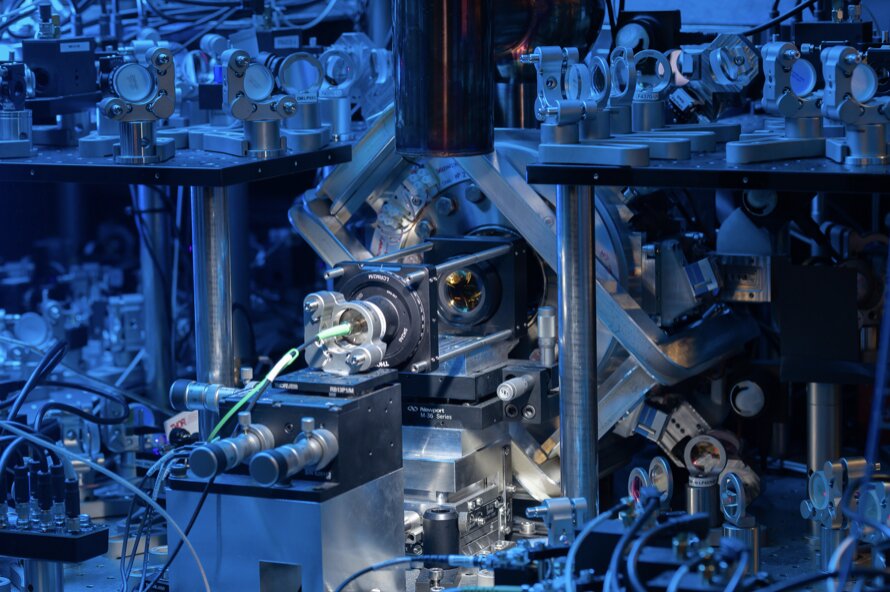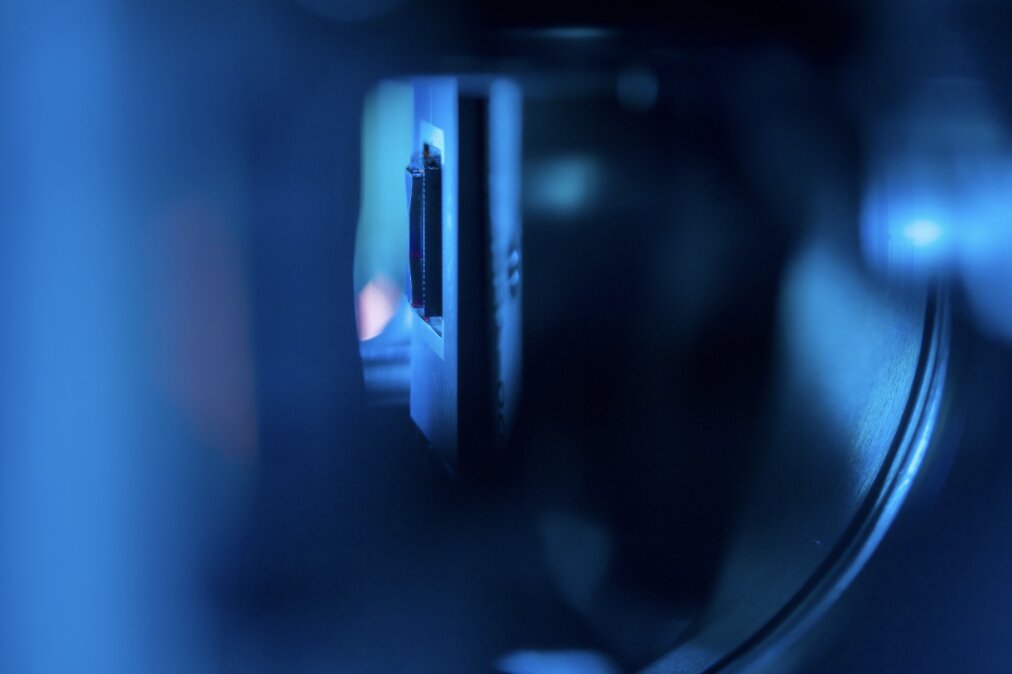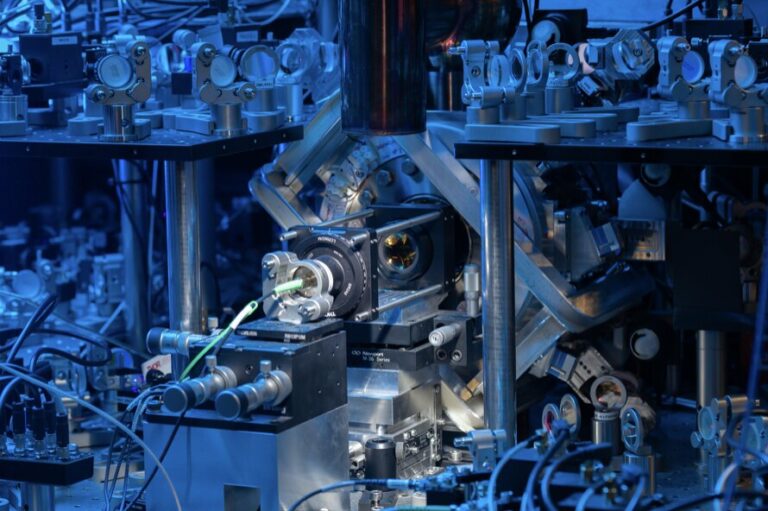Durable Quantum Memory Storing Information within a Trapped-Ion Quantum Network
Researchers at University of Oxford have recently created a quantum memory within a trapped-ion quantum network node. Their unique memory design, introduced in a paper in Physical Review Letters, has been found to be extremely robust, meaning that it could store information for long periods of time despite ongoing network activity.
“We are building a network of quantum computers, which use trapped ions to store and process quantum information,” Peter Drmota, one of the researchers who carried out the study, told Phys.org. “To connect quantum processing devices, we use single photons emitted from a single atomic ion and utilize quantum entanglement between this ion and the photons.”
Trapped ions, charged atomic particles that are confined in space using electromagnetic fields, are a commonly used platform for realizing quantum computations. Photons (i.e., the particles of light), on the other hand, are generally used to transmit quantum information between distant nodes. Drmota and his colleagues have been exploring the possibility of combining trapped ions with photons, to create more powerful quantum technologies.
“Until now, we have implemented a reliable way of interfacing strontium ions and photons, and used this to generate high-quality remote entanglement between two distant network nodes,” Drmota said. “On the other hand, high-fidelity quantum logic and long-lasting memories have been developed for calcium ions. In this experiment, we combine these capabilities for the first time, and show that it is possible to create high-quality entanglement between a strontium ion and a photon and thereafter store this entanglement in a nearby calcium ion.”

Integrating a quantum memory into a network node is a challenging task, as the criteria that need to be fulfilled for such a system to work are higher than those required for the creation of a standalone quantum processor. Most notably, the developed memory would need to be robust against concurrent network activity.
“This means that the quantum information stored in the memory must not degrade while a network link is established,” Drmota explained. “This requires extreme isolation between the memory and the network, but at the same time, there also needs to be a fast and reliable mechanism that couples the memory to the network when needed.”
To create their quantum memory, Drmota and his colleagues used two different atomic species, namely strontium and calcium, as this allowed them to minimize crosstalk while establishing a network link. The limited crosstalk in this mixed-species architecture also allowed them to detect errors in real-time and to utilize what is known as in-sequence cooling. Mixed-species entangling gates provided the missing connection between the network and the memory.
“One of the technical error sources that we face with trapped-ion qubits is dephasing due to magnetic field noise,” Drmota said. “Nevertheless, calcium-43 features transitions that are insensitive to magnetic fields, eliminating this error, hence boosting their coherence time. While strontium-88 is perfectly suited for generating photons for networking, it is sensitive to magnetic field noise.”

Although strontium-88 is known to be sensitive to magnetic field noise, the researchers were able to preserve entanglement between their memory ion and a photon for a longer time, by transferring quantum information from the strontium to calcium in the system. Specifically, they could preserve this entanglement for over 10s, which is at least 1000 times longer than they observed between a bare strontium ion and a photon.
“Furthermore, the strontium ion can be reused to generate further entangled photons, and we show that this process does not affect the fidelity of entanglement between the memory and the previous photon, hence achieving robustness to network activity,” Drmota said. “Notably, we managed to integrate the complexity associated with multiple challenging techniques, which have been developed in isolation in different setups over many years, in a single experiment.”
In initial tests, the quantum memory created by Drmota and his colleagues achieved very promising results, as it was found to be highly robust, preserving entanglement between a trapped ion and photon for at least 10s. The team’s demonstration of this quantum memory could be an important milestone on the ongoing quest to realize distributed quantum information processing.
Using their design, individual quantum computational nodes can be loaded with a given number of processing qubits (i.e., calcium), while the network qubit (i.e., strontium) can then be used to create quantum links between distant modules. Ultimately, this promising quantum memory could pave the way towards the creation of scalable quantum computing systems, as using small modules that can process quantum information and interconnecting them with other modules circumvents the need for large and complex ion traps.
“The robust quantum memory could be used in quantum repeaters, for private (blind) quantum computation, and is key for new developments in quantum communications, metrology and time keeping,” Drmota added. “For example, for the nascent field of entangled atomic clocks, the long entanglement storage durations achieved in our experiments will lead to an order-of-magnitude improvement in the precision of frequency comparison between distant clocks.”
This article is republished from PhysORG under a Creative Commons license. Read the original article.
Do not forget to share your opinion with us to provide you with the best posts !




0 Comments